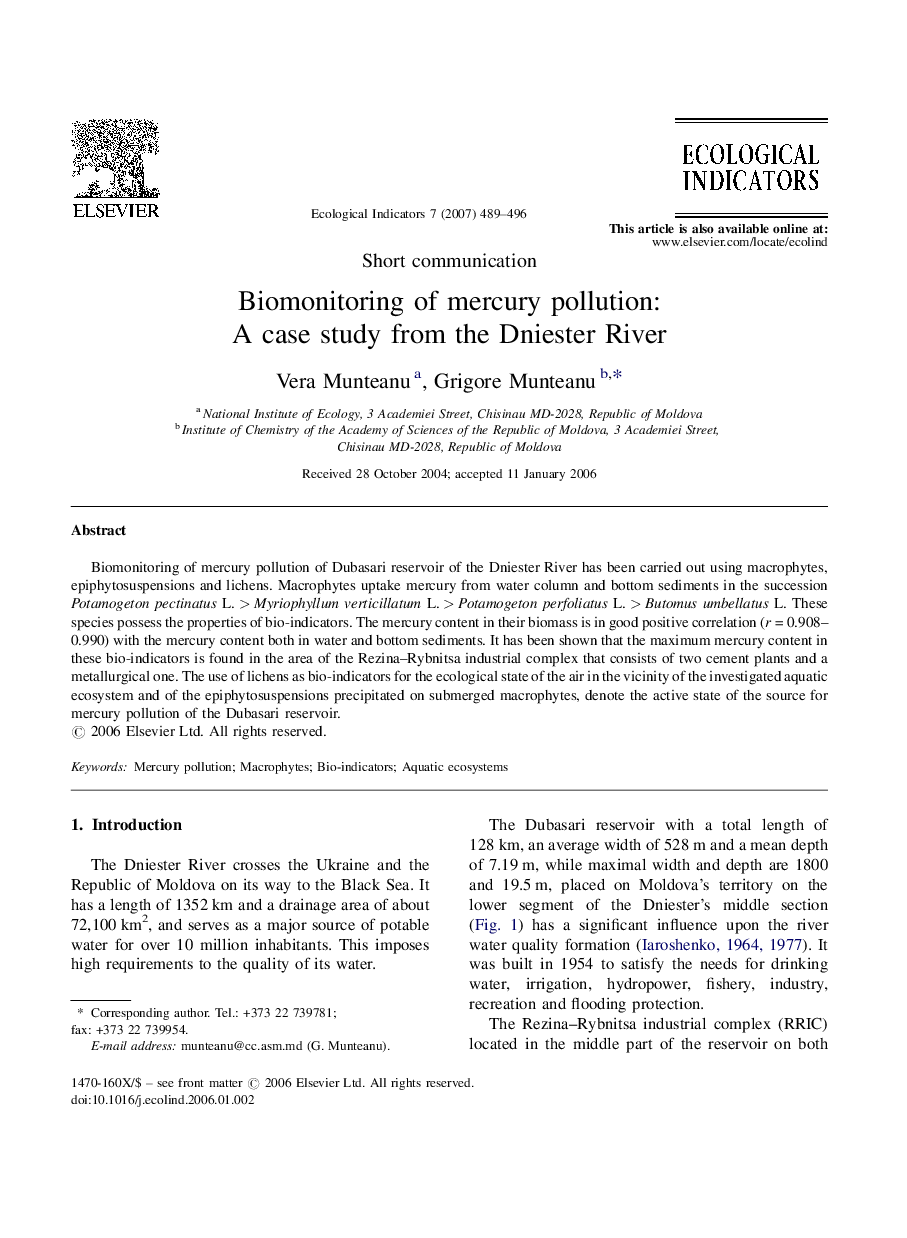| Article ID | Journal | Published Year | Pages | File Type |
|---|---|---|---|---|
| 4374503 | Ecological Indicators | 2007 | 8 Pages |
Abstract
Biomonitoring of mercury pollution of Dubasari reservoir of the Dniester River has been carried out using macrophytes, epiphytosuspensions and lichens. Macrophytes uptake mercury from water column and bottom sediments in the succession Potamogeton pectinatus L. > Myriophyllum verticillatum L. > Potamogeton perfoliatus L. > Butomus umbellatus L. These species possess the properties of bio-indicators. The mercury content in their biomass is in good positive correlation (r = 0.908-0.990) with the mercury content both in water and bottom sediments. It has been shown that the maximum mercury content in these bio-indicators is found in the area of the Rezina-Rybnitsa industrial complex that consists of two cement plants and a metallurgical one. The use of lichens as bio-indicators for the ecological state of the air in the vicinity of the investigated aquatic ecosystem and of the epiphytosuspensions precipitated on submerged macrophytes, denote the active state of the source for mercury pollution of the Dubasari reservoir.
Related Topics
Life Sciences
Agricultural and Biological Sciences
Ecology, Evolution, Behavior and Systematics
Authors
Vera Munteanu, Grigore Munteanu,
